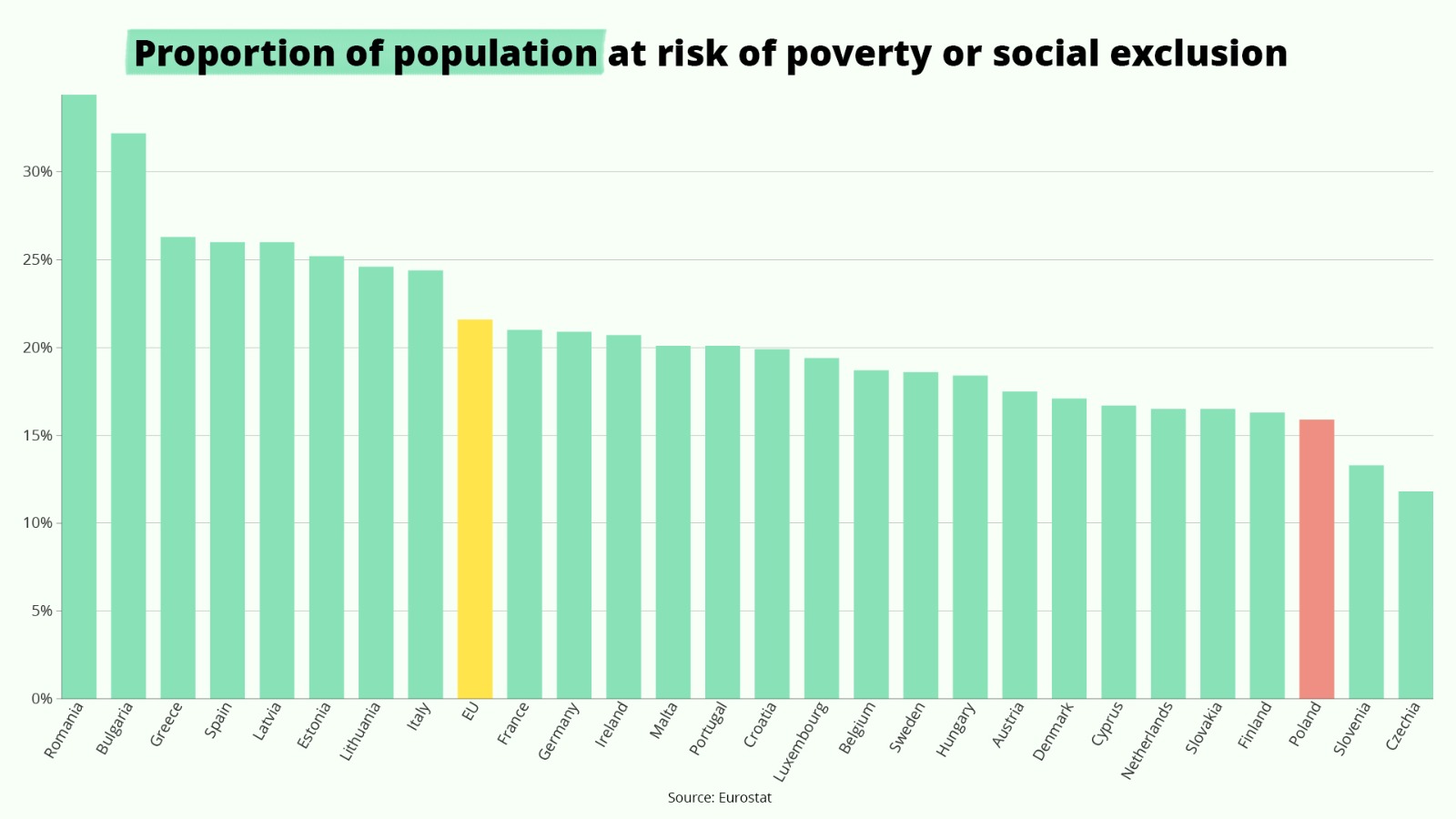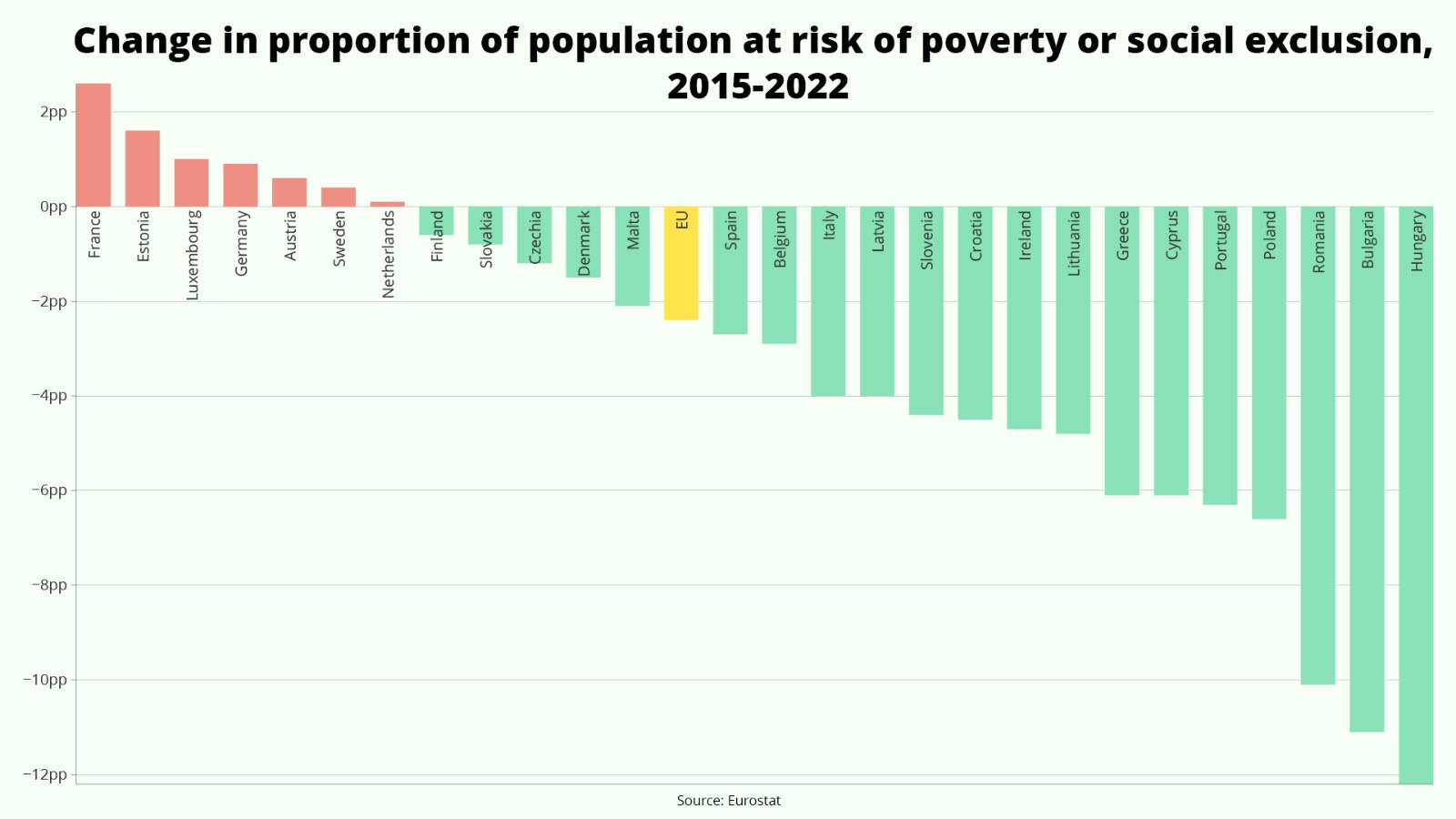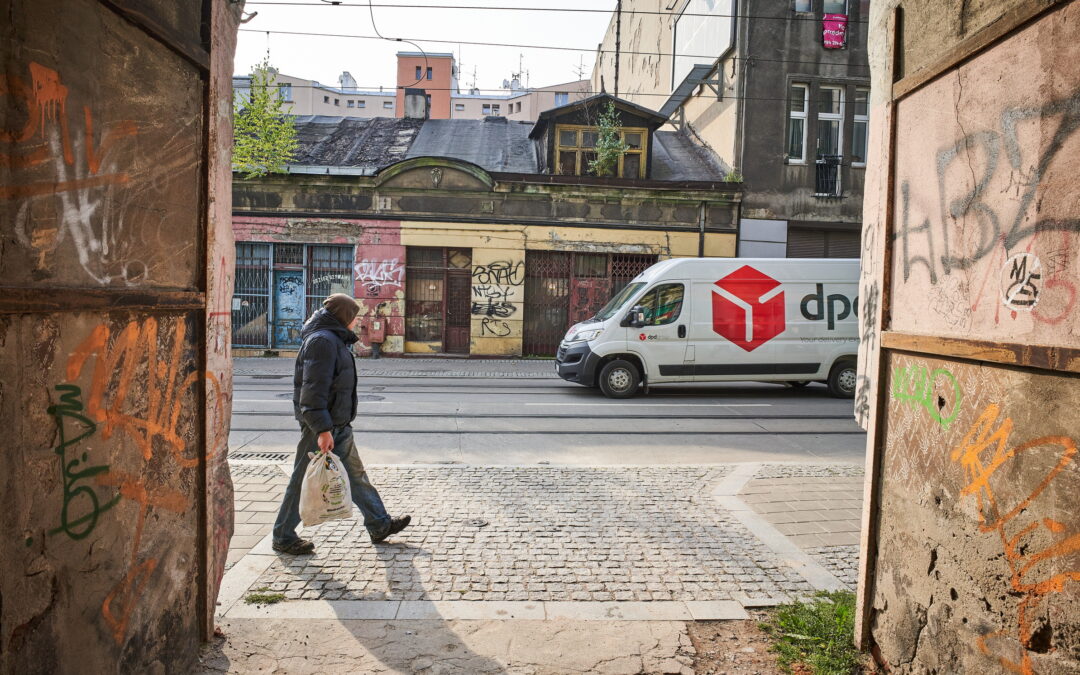The proportion of people in Poland classified as being at risk of poverty or social exclusion is the third lowest among all European Union member states, new Eurostat data show.
The only countries with lower figures than Poland (15.9%) are Slovenia (13.3%) and the Czech Republic (11.8%). At the other end of the scale, the highest proportions of people at risk of poverty or social exclusion were found in Romania (34.4%), Bulgaria (32.2%) and Greece (26.3%).

Poland has seen a significant improvement on this measure since 2015, the first year for which data are available.
Back then, 22.5% of the Polish population were deemed at risk. Its fall since then (of 6.5 percentage points) was more rapid than the 2.4 percentage point decline across the EU as a whole, from 24% to 21.6%.
During that period, only three member states have recorded large declines: Hungary (12.2 percentage points), Bulgaria (11.1 p.p.), and Romania (10.1 p.p.). Seven countries – France, Estonia, Luxembourg, Germany, Austria, Sweden and the Netherlands – have seen an increase in those at risk of poverty.

The new Eurostat data support other similar findings. Last year, an EU report found that the proportion of children in Poland classified as being severely deprived decreased from 30.3% in 2009 (which was then the sixth highest level in the European Union) to 6.2% in 2020 (the second lowest figure).
The authors noted that Poland recorded a particularly large improvement from 2016 onwards, which was the first full year that the current government was in power and when it began increasing social spending.
Likewise, the European Anti-Poverty Network found that in 2021 the number of Poles living in extreme poverty fell by a fifth, to 4.2% of the population, down from a peak of 7.4% in 2014.
Poland has the second lowest proportion of severely deprived children in the EU, 6.2%, down from 30.3% in 2009, which was then the sixth highest level
There was a particular improvement from 2016, when the new PiS government began boosting social spending https://t.co/j8Mkb4wMXn
— Notes from Poland 🇵🇱 (@notesfrompoland) November 10, 2022
Main image credit: Marcin Stepien / Agencja Wyborcza.pl

Daniel Tilles is editor-in-chief of Notes from Poland. He has written on Polish affairs for a wide range of publications, including Foreign Policy, POLITICO Europe, EUobserver and Dziennik Gazeta Prawna.




















